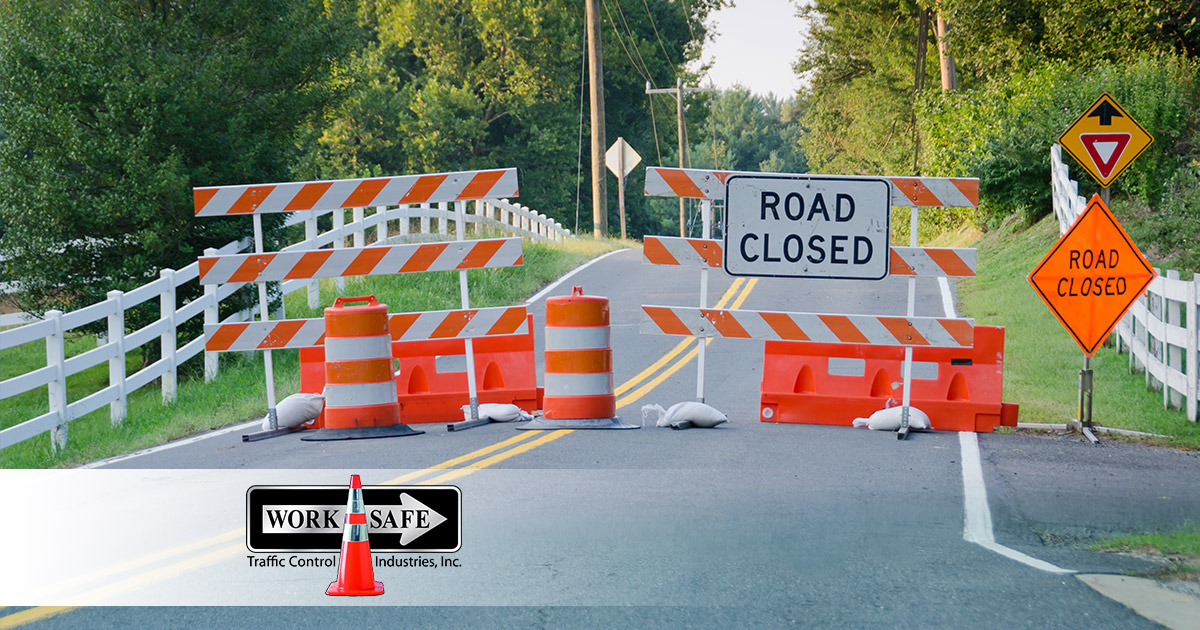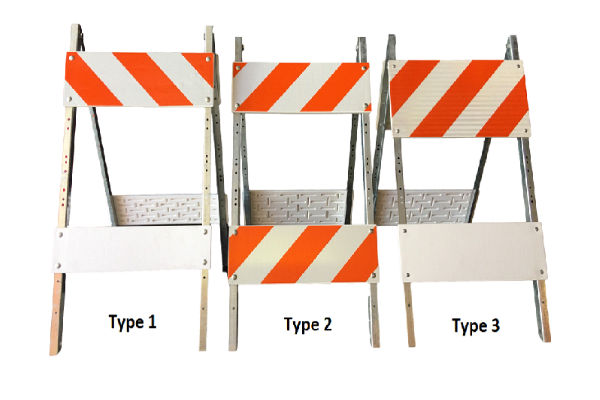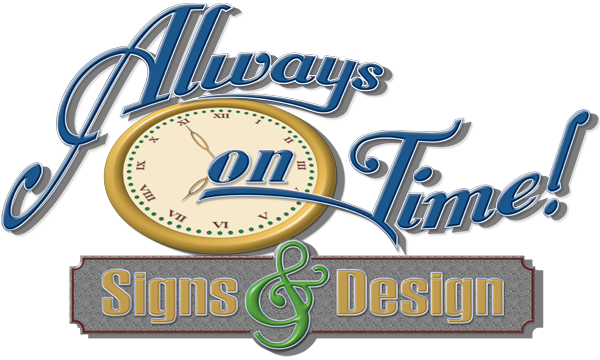
Highway construction work has increased each year steadily, along with concern for the safety and well-being of workers, pedestrians, and possible vehicle collisions. Road barricades are important tools to help protect workers by controlling the flow of traffic in work zones, as well as in many other situations where safety involves ingress and egress of vehicles and people.
There are many types of traffic barriers that may be used, the most basic and familiar being the A-Frame or parade barricade, which resembles a wooden sawhorse with a brightly painted top rail.
These road or traffic barriers are a variety of barriers that can be fitted with reflective or flashing lights and can be used to block road construction, excavation, crowd control, and other safety-related purposes. Regardless of the differences, they all serve the same critical purpose – to help control the flow of traffic and protect workers.
Road barricades, also known as traffic or safety barriers, are used to control the flow of vehicular or pedestrian traffic in a specified area. They are used at construction sites, accident scenes, as roadblocks, at school zones, concerts, and in a variety of other crowd control situations for temporary traffic control. There are many different types of road barriers in varying sizes, weights, and strengths, and it is important to choose the variety of barriers so that it can successfully perform the job required. Always be sure your devices are certified by MASH or NCHRP 350 compliant for crash tests.
What are Road Barricades?
In its simplest terms, a traffic barricade is a portable or fixed system having from one to three rails with proper marking and is used to control road traffic by closing, limiting, or diverting oncoming traffic from another area.
There are generally three types of barricades, called Type I, Type II, and Type III. They are commonly used for road detours and closings where vehicles are present. However, each variety of barricades has its own distinct advantages and was designed for a particular purpose. Therefore, selecting the right one for your individual needs should be carefully considered to ensure maximum safety and efficacy as well as compliant to crash testing and MUTCD requirements.
Folding street barricades are referred to as A-frame barricades, which can cause confusion as the same term is often applied to Style I and Style II barriers. All folding traffic barricades are collapsible and fold like a sandwich board, so they compactly, transfer easily, and if struck by a vehicle, they collapse easily. When they’re open, they make an “A” shape when viewed from the side.
Let’s look at each of them in a little more detail.

Type I Barricade
You will often see traffic barricades referred to as “Type I” or “Type II.” This term can apply to different styles of barriers, but what it specifically denotes is the number of reflective panels the barricade contains.
A Type I style folding barricade is so named because it has only one reflective panel or rail. Typically, it is at least 24 inches wide with orange and white stripes alternating at a 45-degree angle. Sometimes a second non-reflective rail is added to help give it a more stable base of support. Type I is also known as a waffle-board barrier because it resembles a sawhorse that can be folded flat. A Style I barrier indicates sheeting is present on the top board. While this variety is also considered an A-frame barricade, it is taller than the basic sawhorse A-frame and can be made of wood or plastic.
They are meant to collapse easily on impact so that they do not become a flying projectile that could harm other vehicles or pedestrians. Additionally, the stack-able nature of these barriers means that many of them can be transported and deployed quickly and easily to a work zone or construction area. They can also be taken down quickly and stored when not in use without taking up a huge amount of room. Style I Barricades are often used for pedestrian traffic control or on low-speed roads.
Type II Barricade
Just like Type I, a Type II barricade is lightweight and can be folded flat. It should also collapse easily upon impact.
It differs from Style I in that it has two reflective rails instead of one, with alternating orange and white stripes. Because the bottom portion of the barricade is also a reflective surface, these barricades generally offer better visibility at night than the Style I barriers. Therefore, Type II barriers are recommended for use on expressways or other higher speed roads.
Type III Barricade
Style III barricades are larger and have three reflective panels with alternating orange and white stripes. They are at least 4 feet wide, or larger, and are most often used for road closings because of their size and visibility. You can see this style of barrier positioned across roadways for detours, road closings, around heavy equipment, and for other types of traffic control.
Like Style I and Style II barricades, the Type III name refers to the number of reflective panels; in this case, three. However, unlike Type I and II, the Style III category of road barrier refers to only one variety of barricade. This style consists of two uprights, made of either wood, plastic, or steel, with three reflective rails between them. Sheeting can be on one side or both, they are break-away and typically come with a 360-degree flashing light.
Type III barricades are usually larger and more prominent than folding or parade-style barricades, so they are typically used to block access when an entire roadway or path is closed.
Where can you buy road barricades?
Worksafe Traffic Control Industries has you covered! We manufacture and distribute state-of-the-art traffic control products and devices, as well as commercial signs. We carry a full line of road barricades and can help you decide which ones will best suit your needs, along with the option to rent or buy. All our Type I, II and III break-away barriers are NCHRP 350 compliant.
Our Style I and Style II road barriers come in wood or plastic, while our Style III barricade has a galvanized square tubing frame.
We are committed to providing our customers with top-quality products that meet or exceed industry standards. In addition, we offer expert technical advice, competitive pricing, and outstanding customer service.
Final Thoughts
To recap, Types I and II road barriers are very similar. Type I has one reflective panel, and Type II has two panels. Both are folding barriers that will collapse easily on impact, are easily transported and easily stored in a minimum amount of space.
Style I is usually recommended for pedestrian traffic control or on low-speed roads, while Style II is more often recommended for use on expressways or other higher speed roads. Style III is larger and heavier and is most often used to block an entire road or exit. Always refer to your project plans or the MUTCD for reference.
Keep in mind that the goal of any barrier setup is to create a safe environment that reduces or eliminates the likelihood of injuries or accidents with a combination of visual cues and physical barriers entirely. In order to do that effectively, you will need to know what type of traffic barricades will best fit your specific needs. Worksafe Traffic Control Industries can help you every step of the way. Find out how by calling us at 802-223-8948 or visiting us online.

